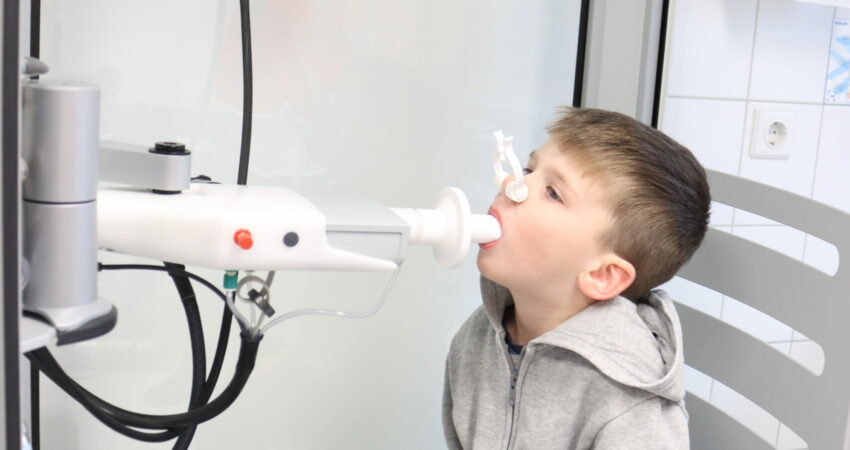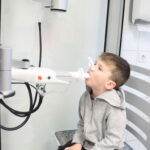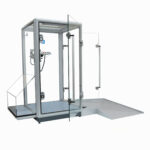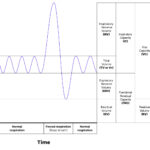Over time, different technological variants have been developed that allow a spirometric measurement to be carried out.
These basic methods exist:
- Mechanical Spirometers: These use moving parts to measure air flow and volume. Examples include bellows and piston spirometers.
- Pneumotachographs: These measure airflow using differential pressure across a known resistance.
- Ultrasonic Spirometers: These use ultrasound waves to measure airflow. Ultrasonic spirometry involves sending ultrasound waves through the airflow and measuring the time it takes for these waves to travel between sensors. The speed of the airflow affects the travel time, which can be used to calculate flow rates.
- Flow-Sensing Spirometers (Turbine Spirometers): These use a rotating vane or turbine in the flow path to measure the volume and flow of air.
Comparing Ultrasound to Other Technologies
Advantages of Ultrasonic Spirometry:
- Accuracy and Precision
Ultrasound spirometers provide highly accurate and precise measurements. They use ultrasound waves to measure the speed of airflow, which can yield very precise data on lung function. This level of accuracy is crucial for diagnosing and monitoring respiratory conditions. - No Moving Parts
Unlike mechanical spirometers, ultrasound spirometers have no moving parts. This reduces the potential for mechanical wear and tear, leading to more reliable and consistent performance over time. The lack of moving parts also means fewer maintenance requirements and less frequent calibration. - Low Resistance
Ultrasound spirometers typically offer low resistance to airflow, making the test more comfortable for patients. This can be particularly important for patients with severe respiratory conditions who may have difficulty breathing through devices with higher resistance. - Immediate Digital Readouts
These devices provide immediate digital readouts, which facilitate quick assessments and real-time monitoring. This is especially beneficial in clinical settings where timely decisions are crucial. - Ease of Use
Modern ultrasound spirometers are often designed with user-friendly interfaces and can be easier to operate than some traditional mechanical spirometers. This reduces the training required for healthcare professionals and can enhance the efficiency of respiratory testing. - Portability
Many ultrasound spirometers are compact and portable, making them suitable for use in various settings, including clinics, hospitals, and even home environments. This portability enhances the flexibility and convenience of respiratory testing. - Lower Risk of Contamination
Because ultrasound spirometers don’t have internal moving parts that come into direct contact with exhaled air, there is a lower risk of cross-contamination between patients. This is particularly important in maintaining hygiene and preventing the spread of infections.
Advantages of Mechanical and Pneumotachograph Spirometry:
- Cost-Effectiveness: Mechanical spirometers and pneumotachographs are generally more affordable and simpler in construction.
- Durability: Mechanical spirometers can be more robust and durable under heavy use.
- Simplicity: These devices can be easier to use and maintain, with fewer technical complexities.
Disadvantages of Mechanical and Pneumotachograph Spirometry:
- Calibration and Maintenance: Mechanical devices often require regular calibration and maintenance to ensure accuracy.
- Potential for Wear and Tear: Mechanical parts can wear out over time, potentially affecting accuracy and requiring replacements.
- Higher Resistance: Mechanical components can introduce higher resistance in the airflow path, which may be uncomfortable for some patients.
In conclusion, the choice of technology for spirometry depends on the specific needs and constraints of the medical practice or research setting. Ultrasound spirometers combine precision, reliability, and ease of use, making them highly effective for both clinical and home use. Their advanced technology, coupled with practical benefits such as low resistance and immediate readouts, makes them a preferred choice for accurately assessing lung function and monitoring respiratory conditions.




